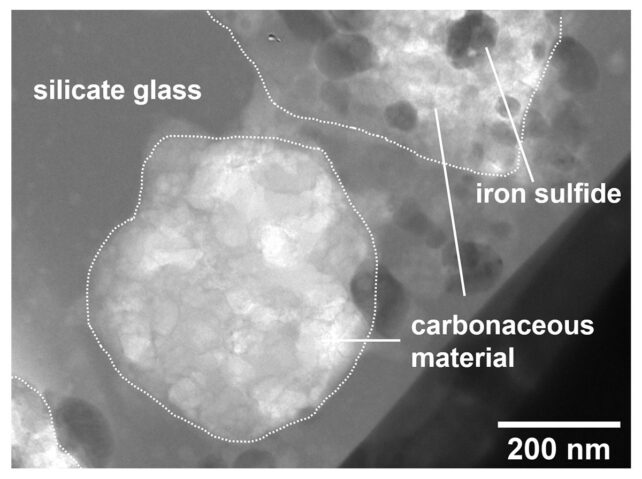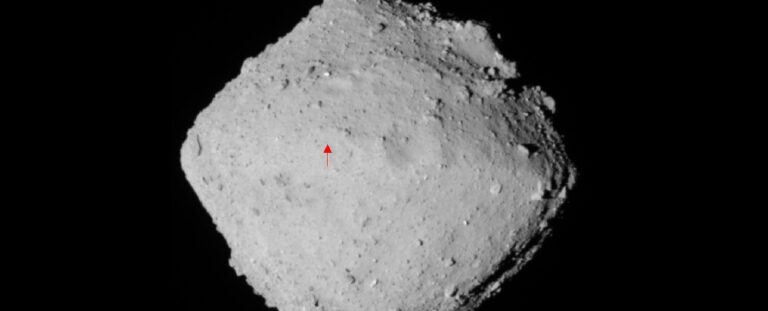Traces of comet particles have been discovered in samples taken from the asteroid Ryugu, suggesting the presence of the “seeds of life.”
On December 5th, 2020, Japan’s Hayabusa2 mission accomplished the successful return of samples it had gathered from the Near-Earth Asteroid (NEA) 162173 Ryugu to Earth.
As asteroids are remnants from the early stages of the Solar System’s formation, the analysis of these samples will provide valuable insights into the conditions that prevailed during that time.
Scientists are particularly intrigued by the prospect of determining how organic molecules were distributed across the Solar System shortly after its formation, approximately 4.6 billion years ago. This investigation may offer valuable clues regarding the emergence of life and its potential origins.
The samples have already yielded a significant amount of information, including the discovery of over 20 amino acids, vitamin B3 (niacin), and interstellar dust.
A recent study conducted by a team of Earth scientists from Tohoku University revealed that the Ryugu samples also exhibited signs of micrometeoroid impacts, resulting in the formation of melted glass and minerals.

The micrometeoroids discovered in the Ryugu samples were determined to originate from other comets and contain carbonaceous materials similar to primitive organic matter commonly found in ancient cometary dust. The team, led by Megumi Matsumoto, an assistant professor from Tohoku University’s Graduate School of Science, consisted of researchers from various institutions including Kyoto University, the CAS Center for Excellence in Deep Earth Science, ISAS, JASRI, JAXA, and NASA’s Johnson Space Center.
The findings were recently published in the journal Science Advances. Ryugu, like the Moon and other airless bodies, lacks a protective atmosphere and is not subject to weathering or erosion. As a result, craters caused by previous impacts on its surface are well-preserved over time. These impacts generate intense heat, leading to the formation of melted glass patches known as “melt splashes” that solidify in the vacuum of space. The composition of the asteroid’s surface materials is altered by these impacts, providing valuable insights into its impact history. Upon analyzing the Ryugu samples, Matsumoto and her colleagues discovered melt splashes ranging in size from 5 to 20 micrometers.
Their composition suggests they came from cometary sources that impacted Ryugu while it was in a near-Earth orbit.

In a recent news release from Tohoku University, Matsumoto stated that our 3D CT imaging and chemical analyses have provided new insights. The results indicate that the melt splashes primarily consist of silicate glasses with voids and small inclusions of spherical iron sulfides. Furthermore, the chemical compositions of these melt splashes suggest a mixture of Ryugu’s hydrous silicates with cometary dust.
Through their analysis, they discovered small carbonaceous materials with a spongy texture, indicating the presence of nano-pores. These nano-pores are formed due to the release of water vapor from hydrous silicates. Interestingly, this vapor was captured in the melt splashes, which also contained silicate glasses rich in magnesium and iron (Mg-Fe) as well as iron-nickel sulfides.
While the carbonaceous materials share a similar texture to primitive organic matter found in cometary dust, they differ in composition by lacking nitrogen and oxygen. These findings shed light on the complex nature of the melt splashes and provide valuable insights into the composition of Ryugu’s surface.
Said Matsumoto:
“We propose that the carbonaceous materials formed from cometary organic matter via the evaporation of volatiles, such as nitrogen and oxygen, during the impact-induced heating. This suggests that cometary matter was transported to the near-Earth region from the outer solar system. This organic matter might be the small seeds of life once delivered from space to Earth.”
In the future, the team aims to investigate additional Ryugu samples, which will offer additional understanding of the delivery of primitive organic materials to Earth billions of years ago.
Likewise, researchers at NASA’s Johnson Space Center have recently finished the meticulous task of extracting the samples gathered by the OSIRIS-REx mission from their sample container.
Examination of these samples will unveil the makeup and past of asteroid Bennu, another NEA that will offer crucial insights into the evolution of our Solar System.
This article is republished from sciencealert under a Creative Commons license. Read the original article.
Do not forget to share your opinion with us to provide you with the best posts !




0 Comments